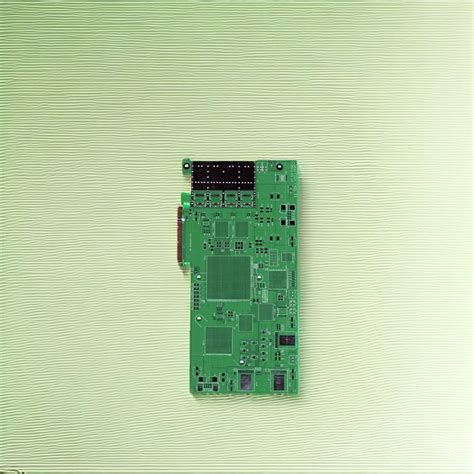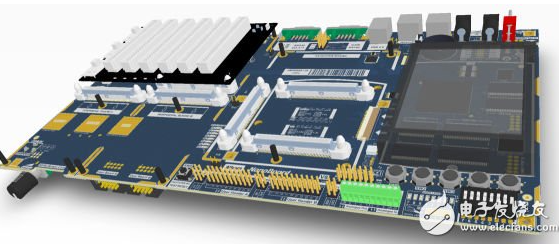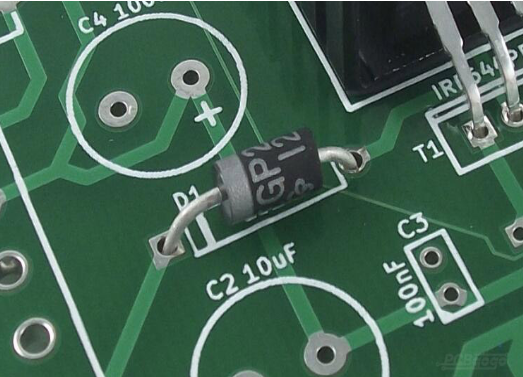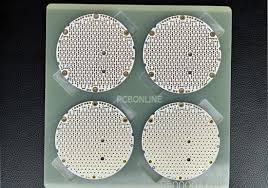Introduction to high speed pcb designing
Understanding the Basics of High-Speed PCB Design
High-speed PCB design is a critical aspect of modern electronics, where the demand for faster, more efficient devices continues to grow. As technology advances, the need for high-speed circuits becomes increasingly prevalent, necessitating a comprehensive understanding of the principles and challenges associated with designing these complex systems.
At its core, high-speed PCB design involves managing the electrical performance of a circuit to ensure signal integrity, minimize electromagnetic interference, and optimize power distribution.
This requires a deep understanding of the interplay between various design elements, including materials, layout, and component selection.
To begin with, one must appreciate the significance of signal integrity in high-speed PCB design.
Signal integrity refers to the preservation of the quality of electrical signals as they travel through the circuit. In high-speed applications, signals can degrade due to factors such as impedance mismatches, crosstalk, and reflections. Therefore, designers must carefully consider trace impedance, which is influenced by the width, thickness, and dielectric properties of the PCB material. By ensuring that traces are properly matched to the impedance of the components they connect, designers can minimize signal reflections and maintain signal integrity.
Moreover, the layout of a high-speed PCB plays a crucial role in its performance.
The arrangement of components and traces can significantly impact the circuit’s ability to function at high speeds. For instance, placing components too far apart can lead to increased trace lengths, which in turn can cause signal delay and degradation. To mitigate these issues, designers often employ techniques such as differential signaling and controlled impedance routing. Differential signaling involves using pairs of traces to carry signals, which helps reduce electromagnetic interference and improve signal integrity. Controlled impedance routing, on the other hand, involves designing traces with specific impedance values to match the components they connect, further enhancing signal quality.
In addition to signal integrity, electromagnetic interference (EMI) is another critical consideration in high-speed PCB design.
EMI can cause unwanted noise and signal distortion, leading to reduced performance or even failure of the circuit. To combat EMI, designers must implement strategies such as proper grounding, shielding, and the use of decoupling capacitors. Grounding involves creating a low-resistance path for electrical currents to return to the power source, which helps reduce noise and improve signal quality. Shielding, meanwhile, involves enclosing sensitive components or traces in conductive materials to block external electromagnetic fields. Decoupling capacitors are used to filter out high-frequency noise from power and ground planes, further enhancing the circuit’s resilience to EMI.
Furthermore, power distribution is a vital aspect of high-speed PCB design.
As circuits operate at higher speeds, they require more power, which can lead to increased heat generation and potential thermal issues. To address this, designers must ensure that power is distributed efficiently across the PCB, using techniques such as power planes and thermal vias. Power planes provide a low-resistance path for electrical currents, reducing voltage drops and improving power delivery. Thermal vias, on the other hand, help dissipate heat by providing a path for heat to travel from hot components to cooler areas of the PCB.
In conclusion, high-speed PCB design is a complex and multifaceted discipline that requires a thorough understanding of various principles and techniques. By focusing on signal integrity, electromagnetic interference, and power distribution, designers can create high-performance circuits that meet the demands of modern technology. As the field continues to evolve, staying informed about the latest advancements and best practices will be essential for success in high-speed PCB design.
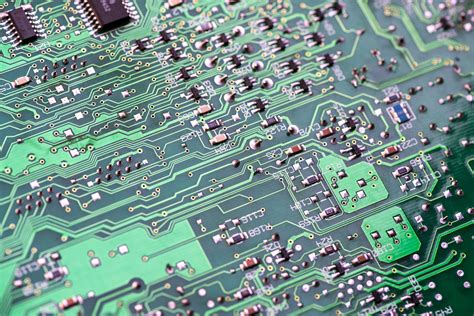
Key Considerations for High-Speed PCB Layout
In the realm of modern electronics, high-speed printed circuit board (PCB) design has become a critical area of focus, driven by the ever-increasing demand for faster and more efficient electronic devices. As technology advances, the need for high-speed PCBs in applications such as telecommunications, computing, and consumer electronics has grown exponentially. Consequently, understanding the key considerations for high-speed PCB layout is essential for engineers and designers aiming to optimize performance and reliability.
To begin with, signal integrity is a paramount concern in high-speed PCB design.
As signal frequencies increase, the potential for signal degradation due to factors such as reflection, crosstalk, and electromagnetic interference (EMI) also rises. Therefore, careful attention must be paid to trace impedance control. Ensuring that traces have consistent impedance is crucial to minimizing reflections and maintaining signal integrity. This can be achieved through meticulous trace width and spacing calculations, as well as the use of controlled impedance materials.
Moreover, the layout of power and ground planes plays a significant role in high-speed PCB design.
A well-designed power distribution network (PDN) is essential for providing stable power to all components while minimizing noise. Utilizing a multi-layer PCB with dedicated power and ground planes can help reduce inductance and improve the overall performance of the PDN. Additionally, placing decoupling capacitors close to power pins can further enhance power integrity by filtering out high-frequency noise.
Transitioning to the topic of crosstalk, it is important to recognize that this phenomenon can severely impact the performance of high-speed circuits.
Crosstalk occurs when a signal in one trace induces an unwanted signal in an adjacent trace, leading to data corruption and signal integrity issues. To mitigate crosstalk, designers should maintain adequate spacing between traces and consider the use of differential signaling, which inherently reduces susceptibility to crosstalk by utilizing pairs of traces that carry equal and opposite signals.
Another critical consideration is the management of electromagnetic interference (EMI).
High-speed circuits are particularly prone to EMI, which can disrupt the operation of both the PCB itself and nearby electronic devices. To address this, designers should implement proper shielding techniques, such as enclosing sensitive components in metal shields or using ground planes to absorb and redirect EMI. Additionally, careful routing of high-speed traces and minimizing loop areas can help reduce EMI emissions.
Thermal management is yet another vital aspect of high-speed PCB design.
As components operate at higher speeds, they tend to generate more heat, which can adversely affect performance and reliability. Effective thermal management strategies include the use of thermal vias, heat sinks, and thermal pads to dissipate heat away from critical components. Furthermore, selecting materials with high thermal conductivity can aid in maintaining optimal operating temperatures.
In conclusion, high-speed PCB design is a complex and multifaceted discipline that requires careful consideration of various factors to ensure optimal performance and reliability. By focusing on signal integrity, power distribution, crosstalk mitigation, EMI management, and thermal considerations, designers can create high-speed PCBs that meet the demands of modern electronic applications. As technology continues to evolve, staying abreast of the latest design techniques and best practices will be essential for engineers seeking to excel in this dynamic field.
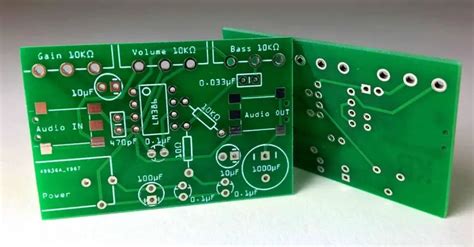
Essential Tools for High-Speed PCB Design
In the realm of high-speed PCB (Printed Circuit Board) design, the selection and utilization of essential tools play a pivotal role in ensuring the success of a project. As electronic devices continue to evolve, demanding faster processing speeds and greater efficiency, the need for precise and effective PCB design becomes increasingly critical. To navigate the complexities of high-speed PCB design, engineers must equip themselves with a suite of specialized tools that facilitate the creation of reliable and high-performance circuits.
Foremost among these tools is advanced PCB design software, which serves as the backbone of the design process.
This software provides a comprehensive environment for schematic capture, layout design, and simulation, enabling designers to visualize and refine their circuits before physical production. Leading software packages, such as Altium Designer, Cadence Allegro, and Mentor Graphics PADS, offer robust features tailored to high-speed design, including signal integrity analysis, impedance control, and automated routing capabilities. These tools empower designers to optimize their layouts for high-frequency signals, minimizing issues such as crosstalk and electromagnetic interference.
In addition to design software, signal integrity analysis tools are indispensable for high-speed PCB design.
These tools allow engineers to simulate and analyze the behavior of signals as they traverse the PCB, identifying potential issues that could degrade performance. By using signal integrity tools, designers can predict how signals will interact with the board’s materials and geometry, enabling them to make informed decisions about trace routing, layer stack-up, and component placement. Tools like HyperLynx and Ansys HFSS provide detailed insights into signal behavior, helping to ensure that the final design meets the stringent requirements of high-speed applications.
Moreover, power integrity analysis tools are crucial for maintaining stable power delivery across the PCB.
As high-speed circuits often operate at low voltages and high currents, ensuring that power is distributed evenly and efficiently is essential. Power integrity tools help designers assess the power distribution network, identifying areas where voltage drops or noise could impact performance. By simulating the power delivery system, engineers can optimize decoupling strategies and adjust the placement of power and ground planes to enhance overall circuit stability.
Furthermore, electromagnetic compatibility (EMC) testing tools are vital for ensuring that high-speed PCBs comply with regulatory standards and do not interfere with other electronic devices.
EMC tools enable designers to evaluate the electromagnetic emissions of their circuits, identifying potential sources of interference and implementing mitigation strategies. By addressing EMC concerns early in the design process, engineers can avoid costly redesigns and ensure that their products meet industry standards.
Finally, prototyping and testing equipment are essential for validating the performance of high-speed PCBs.
Tools such as oscilloscopes, network analyzers, and spectrum analyzers allow engineers to measure and analyze the electrical characteristics of their circuits, verifying that they function as intended. By conducting thorough testing, designers can identify and rectify any issues before mass production, ensuring the reliability and performance of the final product.
In conclusion, the successful design of high-speed PCBs hinges on the effective use of a range of specialized tools.
From advanced design software to signal and power integrity analysis tools, each plays a critical role in addressing the unique challenges posed by high-speed circuits. By leveraging these tools, engineers can create PCBs that meet the demands of modern electronic devices, delivering the speed and performance that today’s technology requires.
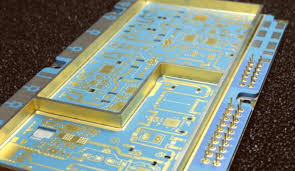
Common Challenges in High-Speed PCB Design and How to Overcome Them
High-speed PCB design is a critical aspect of modern electronics, where the demand for faster, more efficient devices continues to grow. However, designing PCBs for high-speed applications presents several challenges that engineers must address to ensure optimal performance. One of the primary challenges in high-speed PCB design is signal integrity. As signal frequencies increase, issues such as signal reflection, crosstalk, and electromagnetic interference (EMI) become more pronounced. These issues can lead to signal degradation, data errors, and ultimately, device malfunction. To overcome these challenges, designers must carefully consider trace impedance, routing strategies, and the use of proper termination techniques. Implementing controlled impedance traces and maintaining consistent trace widths and spacing can significantly reduce signal reflection and improve signal integrity.
Another significant challenge is managing power distribution and ground planes.
High-speed circuits require stable power delivery to function correctly, and any fluctuations can lead to performance issues. To address this, designers should focus on creating a robust power distribution network (PDN) that minimizes voltage drops and noise. Utilizing multiple power and ground planes can help achieve this by providing low-impedance paths for current flow and reducing the potential for ground bounce. Additionally, decoupling capacitors should be strategically placed near power pins to filter out high-frequency noise and stabilize the power supply.
Thermal management is also a critical consideration in high-speed PCB design.
As components operate at higher speeds, they tend to generate more heat, which can affect performance and reliability. Effective thermal management strategies, such as using thermal vias, heat sinks, and proper component placement, are essential to dissipate heat efficiently. Designers should also consider the thermal properties of the materials used in the PCB, as these can impact the board’s ability to conduct heat away from critical components.
Moreover, the miniaturization of electronic devices poses additional challenges in high-speed PCB design.
As devices become smaller, the available space for routing traces and placing components becomes limited. This can lead to increased crosstalk and EMI if not managed properly. To mitigate these issues, designers can employ techniques such as differential signaling, which uses pairs of traces to carry signals and helps cancel out noise. Additionally, using advanced PCB technologies like microvias and high-density interconnects (HDI) can help maximize the use of available space while maintaining signal integrity.
Furthermore, the choice of materials plays a crucial role in high-speed PCB design.
The dielectric constant and loss tangent of the substrate material can significantly impact signal speed and attenuation. Selecting materials with low dielectric constants and loss tangents can help maintain signal integrity over longer distances and at higher frequencies. Designers must also consider the coefficient of thermal expansion (CTE) of the materials to ensure compatibility with the components and prevent mechanical stress during thermal cycling.
In conclusion, high-speed PCB design presents a unique set of challenges that require careful consideration and strategic planning. By addressing issues related to signal integrity, power distribution, thermal management, miniaturization, and material selection, designers can create PCBs that meet the demands of modern high-speed applications. Through a combination of advanced design techniques and a thorough understanding of the underlying principles, engineers can overcome these challenges and deliver reliable, high-performance electronic devices.

